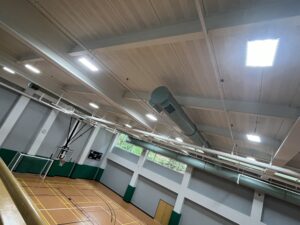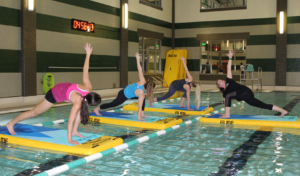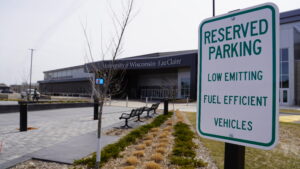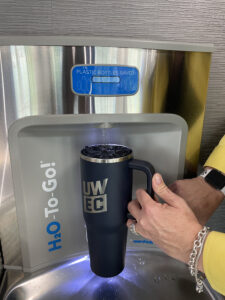5 Strategies to Reduce Environmental Impact and Engage the Next Generation
Campus recreation centers serve as vibrant community hubs for physical wellness, student engagement, and university community-building, but they also present unique opportunities for advancing sustainability. From energy use and water consumption to waste management and transportation, these high-traffic facilities have a significant environmental footprint. Fortunately, with the right operational strategies, they can become powerful models for sustainable innovation. Here are five actionable ways to embed sustainability into the daily operations of your recreation and wellness center:
1. Upgrade to Energy-Efficient Facility Operations
Reduce Utility Costs and Emissions with Smarter Systems
 Energy is one of the largest operational costs for any campus facility. Simple upgrades can drive major savings and reduce carbon emissions:
Energy is one of the largest operational costs for any campus facility. Simple upgrades can drive major savings and reduce carbon emissions:
- Switch to LED lighting in gymnasiums, fitness studios, and administrative offices to cut electricity use by up to 75% compared to traditional lighting.
- Install motion sensors and timers in low-traffic areas such as racquetball courts, locker rooms, and equipment storage rooms.
- Optimize HVAC systems using programmable thermostats, energy-efficient air filtration, and real-time monitoring to balance comfort and cost.
- Consider solar integration or partnerships with the university’s sustainability office to support renewable energy sourcing.
These changes can significantly improve energy efficiency while supporting campus-wide carbon neutrality goals.
 2. Create Sustainable Outdoor and Green Spaces
2. Create Sustainable Outdoor and Green Spaces
Design for Wellness, Biodiversity, and Climate Resilience
Recreation extends beyond four walls. The way your facility uses outdoor space can contribute to both sustainability and student well-being:
- Build outdoor fitness zones using recycled rubber surfaces or other sustainable materials that are durable and eco-friendly.
- Use native and drought-tolerant landscaping to reduce water usage and promote biodiversity.
- Incorporate rooftop gardens or living green walls, which offer natural insulation, reduce stormwater runoff, and create inviting wellness environments.
Green design isn’t just aesthetically pleasing—it’s a functional, long-term investment in sustainable infrastructure.
3. Conserve Water in Locker Rooms and Aquatic Areas
Minimize Waste While Meeting Daily Wellness Demands
 Water conservation is a crucial pillar of sustainability, particularly in recreation centers that support showers, pools, and irrigated grounds:
Water conservation is a crucial pillar of sustainability, particularly in recreation centers that support showers, pools, and irrigated grounds:
- Install low-flow plumbing fixtures in locker rooms and public restrooms to reduce water consumption without sacrificing functionality.
- Adopt high-efficiency irrigation systems with smart controls for fields and outdoor activity zones.
- Use rainwater harvesting systems to support landscaping and reduce reliance on municipal water sources.
- Conduct routine pool maintenance to ensure filtration systems run efficiently and prevent unnecessary water loss through leaks or overflows.
These strategies help align operations with sustainability commitments while preserving a high-quality user experience.
4. Promote Sustainable Transportation and Accessibility
Support Carbon-Free Commutes to and from the Rec Center
 Transportation is a major source of emissions on college campuses. Recreation centers can play a role in shifting transportation habits:
Transportation is a major source of emissions on college campuses. Recreation centers can play a role in shifting transportation habits:
- Add secure bike racks and maintenance stations at facility entrances to encourage cycling as a preferred mode of travel.
- Coordinate with campus transit to provide shuttle service stops near the facility and incentives for public transportation use.
- Explore electric vehicle (EV) charging stations in nearby parking lots or garages to support the growing population of EV users.
Encouraging sustainable transportation options reduces your center’s environmental impact while enhancing student access.
 5. Reduce Waste and Expand Recycling Programs
5. Reduce Waste and Expand Recycling Programs
Build a Culture of Environmental Responsibility Through Everyday Choices
Waste diversion is a highly visible and impactful aspect of sustainability that also offers excellent engagement opportunities:
- Install well-marked recycling and composting stations in lounges, vending areas, and near entrances/exits.
- Replace single-use plastics with hydration stations that encourage reusable water bottle use—ideally branded with your campus logo.
- Partner with green vendors for sustainable fitness equipment, uniforms made from recycled materials, and biodegradable cleaning supplies.
These steps don’t just reduce landfill waste—they teach students that small daily decisions can drive meaningful environmental change.
Cultivating a Culture of Sustainability Through Campus Recreation
Operational Excellence Meets Environmental Impact
When sustainability is embedded into day-to-day operations, a recreation center becomes more than a fitness and well-being hub—it becomes a hands-on learning lab. By demonstrating sustainable choices in energy use, water conservation, transportation, and waste reduction, recreation professionals can educate and inspire the next generation of environmental leaders.
At CENTERS, we work alongside our university partners to align operational practices with institutional sustainability goals—whether during design and construction or through long-term management. Campus recreation centers are uniquely positioned to showcase what’s possible when operational excellence meets environmental responsibility.

 About the Author:
About the Author: